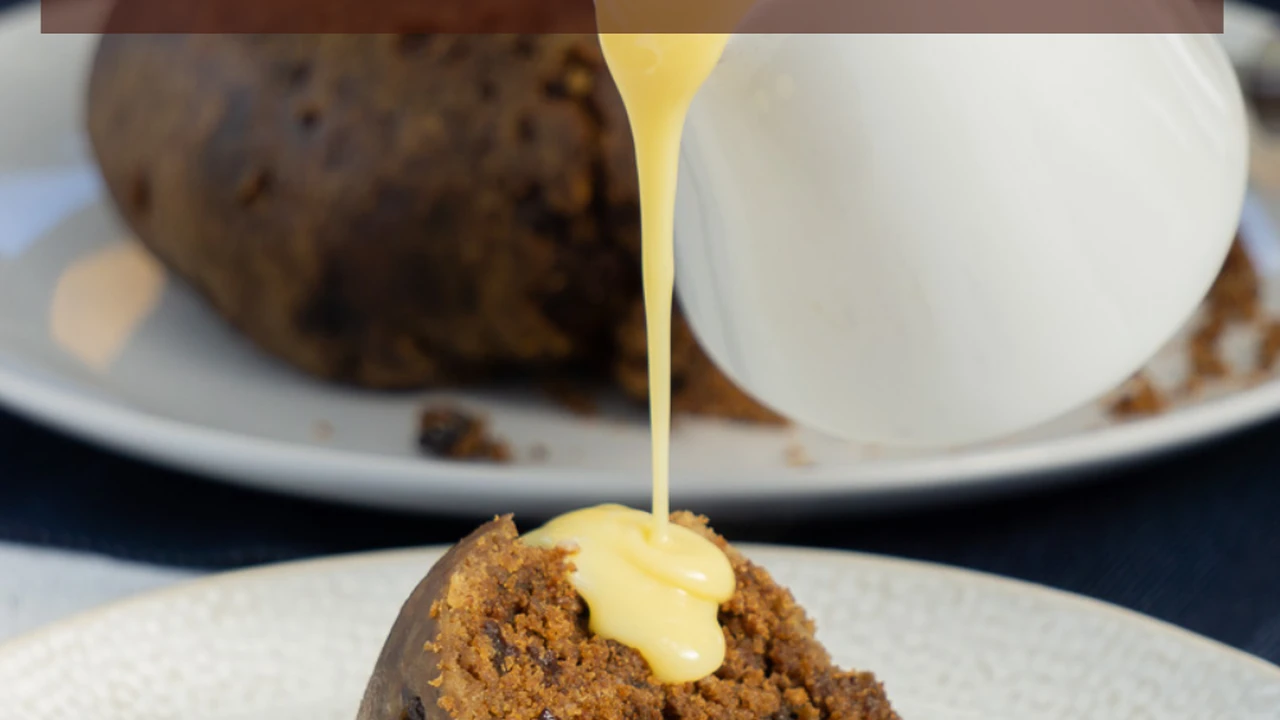Haggis: Understanding Scotland's National Dish for Americans
Sample meta description.

What is Haggis A Deep Dive into Scottish Cuisine
Alright, folks, let's talk haggis! If you're an American venturing into the world of Scottish cuisine, you're bound to encounter this dish. It's Scotland's national dish, a culinary icon, and often misunderstood. So, what exactly is haggis?
Essentially, haggis is a savory pudding containing sheep's pluck (heart, liver, and lungs), minced with onion, oatmeal, suet, spices, and stock. Traditionally, it's encased in the animal's stomach and simmered for hours. Sounds...interesting, right? But trust me, the flavor is much more appealing than the description might suggest.
Think of it as a hearty, peppery, and deeply flavorful meatloaf with a unique texture. The oatmeal adds a nutty element, and the spices create a warm, comforting taste. It’s definitely not your average American fare, but it’s an experience you won’t soon forget.
Haggis Ingredients Explained From Sheep Pluck to Spices
Let's break down the ingredients a bit further. The "pluck" – the heart, liver, and lungs – provides a rich, gamey flavor. Don’t let the thought of organ meat scare you off! These parts are carefully prepared and add a depth of flavor that's hard to replicate. The oatmeal acts as a binder and gives haggis its characteristic texture. It’s not mushy; it’s more like a crumbly, slightly chewy consistency.
The spices are where the magic happens. Typically, you'll find a blend of pepper (black and sometimes white), nutmeg, allspice, and coriander. These spices create a warm, aromatic profile that complements the richness of the meat. Suet, the raw, hard fat found around the kidneys, adds moisture and richness. It's essential for a good haggis.
Finally, the stock (usually beef or lamb) brings everything together. It helps to bind the ingredients and create a cohesive flavor. Some recipes also include onions, which add a touch of sweetness and complexity.
Haggis Cooking Methods Traditional vs Modern Approaches
Traditionally, haggis is cooked in the sheep's stomach. This method imparts a unique flavor and helps to keep the haggis moist. However, modern haggis is often made in synthetic casings, which are easier to handle and more readily available. The cooking process involves simmering the haggis in water for several hours. The exact time depends on the size of the haggis, but it's usually around 3-4 hours.
You can also bake haggis in the oven. This method creates a slightly drier, more crumbly texture. To bake haggis, preheat your oven to around 325°F (160°C) and bake for about 2-3 hours, or until heated through.
Microwaving haggis is also an option, but it's not ideal. It can make the haggis dry and rubbery. If you must microwave it, use low power and add a little water to the dish to help keep it moist.
Serving Suggestions Haggis Neeps and Tatties and More
The classic way to serve haggis is with "neeps and tatties" – mashed turnips and mashed potatoes. This combination is a perfect complement to the richness of the haggis. The sweetness of the turnips and the creaminess of the potatoes balance the savory flavor of the haggis beautifully.
Another popular serving suggestion is with a dram of Scotch whisky. The smoky, peaty notes of the whisky enhance the flavor of the haggis and create a truly authentic Scottish experience. A peaty Islay whisky like Laphroaig or Ardbeg is a great choice.
Haggis can also be used in a variety of other dishes. You can add it to stews, soups, or even use it as a filling for pies. It's a versatile ingredient that can add a unique flavor to many different meals.
Where to Buy Haggis in the US Finding Authentic Options
Finding authentic haggis in the US can be a challenge. It's not something you'll typically find at your local supermarket. However, there are a few options.
Specialty Scottish or British food stores are your best bet. These stores often import haggis from Scotland. You can also find haggis online. Many online retailers specialize in Scottish foods and offer a variety of haggis options.
Some butchers may also be able to make haggis for you. It's worth asking around to see if any local butchers offer this service. Be sure to ask about the ingredients and preparation methods to ensure you're getting an authentic product.
Recommended Haggis Brands and Products Detailed Reviews
Okay, let's get down to specifics. Here are a few haggis brands and products that are worth checking out:
* **Simon Howie Haggis:** This is a popular brand that's widely available in the UK and can be found online. It's made with high-quality ingredients and has a rich, peppery flavor. Simon Howie offers different sizes, making it suitable for both individual servings and family meals. **Price:** Around $20-$30 for a 1.5kg haggis. **Use Case:** Perfect for a traditional Burns Night supper or a hearty weekend meal. * **Macsween Haggis:** Macsween is another well-known brand that's known for its authentic flavor and quality. They offer both traditional haggis and vegetarian haggis. The vegetarian haggis is made with lentils, vegetables, and spices and is a great option for vegetarians who want to experience the taste of haggis. **Price:** Around $25-$35 for a 1kg haggis. **Use Case:** A versatile option that can be used in a variety of dishes, from haggis and neeps and tatties to haggis-stuffed chicken. * **Grant's Haggis:** Grant's is a more budget-friendly option that's still quite tasty. It's made with a blend of beef, lamb, and pork, along with oatmeal and spices. It's a good choice if you're looking for a more affordable haggis option. **Price:** Around $15-$25 for a 1kg haggis. **Use Case:** A good everyday haggis option for adding to stews, soups, or pies.Haggis Nutritional Information and Health Benefits
Haggis is a surprisingly nutritious food. It's a good source of protein, iron, and fiber. It also contains vitamins and minerals, such as vitamin B12, zinc, and selenium.
However, it's also high in fat and cholesterol, so it's important to eat it in moderation. If you're concerned about your cholesterol levels, you may want to choose a leaner haggis option or limit your portion size.
The oatmeal in haggis provides a good source of fiber, which can help to lower cholesterol and improve digestion. The spices in haggis also have antioxidant and anti-inflammatory properties.
Haggis Alternatives for Vegetarians and Vegans Exploring Plant-Based Options
If you're a vegetarian or vegan, you don't have to miss out on the haggis experience. There are several vegetarian and vegan haggis options available. These options typically use lentils, vegetables, and spices to mimic the flavor and texture of traditional haggis.
Macsween Vegetarian Haggis is a popular choice. It's made with lentils, vegetables, oats, nuts, seeds, and spices. It has a similar flavor and texture to traditional haggis and is a great option for vegetarians. Another good option is a homemade lentil haggis. You can find many recipes online.
Haggis and Burns Night A Scottish Tradition Explained
Haggis is traditionally eaten on Burns Night, a celebration of the life and poetry of Scottish poet Robert Burns. Burns Night is celebrated on January 25th each year. The celebration typically involves a Burns supper, which includes haggis, neeps and tatties, and a dram of Scotch whisky. The haggis is often piped in by a bagpiper and addressed with Burns' famous poem "Address to a Haggis."
Haggis Around the World Different Regional Variations
While haggis is most closely associated with Scotland, it's also eaten in other parts of the world. In some countries, similar dishes are made with different ingredients and spices. For example, in Iceland, there's a dish called "slátur," which is made with sheep's blood, suet, and oatmeal. In Korea, there's a dish called "sundae," which is a type of blood sausage.
Haggis Recipes Beyond the Basics Creative Culinary Ideas
Want to get creative with haggis? Here are a few recipe ideas:
* **Haggis Spring Rolls:** Use haggis as a filling for spring rolls. Serve with a sweet chili dipping sauce. * **Haggis Pizza:** Top a pizza with haggis, mozzarella cheese, and your favorite toppings. * **Haggis Nachos:** Layer tortilla chips with haggis, cheese, beans, and salsa. * **Haggis Stuffed Chicken Breast:** Stuff chicken breasts with haggis and bake until cooked through. * **Haggis Scotch Eggs:** Wrap hard-boiled eggs in haggis and deep-fry until golden brown.Haggis Storage and Shelf Life Tips for Freshness
To store fresh haggis, keep it refrigerated in its original packaging. It should be used within a few days of purchase. You can also freeze haggis for longer storage. Wrap it tightly in plastic wrap and then in foil. It can be stored in the freezer for up to 3 months. To thaw frozen haggis, place it in the refrigerator overnight.
Haggis FAQs Answering Common Questions and Misconceptions
Here are some frequently asked questions about haggis:
* **Is haggis safe to eat?** Yes, haggis is safe to eat as long as it's properly cooked. * **What does haggis taste like?** Haggis has a rich, peppery, and savory flavor. * **Is haggis healthy?** Haggis is nutritious, but it's also high in fat and cholesterol, so it should be eaten in moderation. * **Where can I buy haggis?** You can find haggis at specialty Scottish or British food stores, online retailers, and some butchers. * **Can I make haggis at home?** Yes, you can make haggis at home, but it requires some time and effort.:max_bytes(150000):strip_icc()/277019-baked-pork-chops-with-cream-of-mushroom-soup-DDMFS-beauty-4x3-BG-7505-5762b731cf30447d9cbbbbbf387beafa.jpg)






